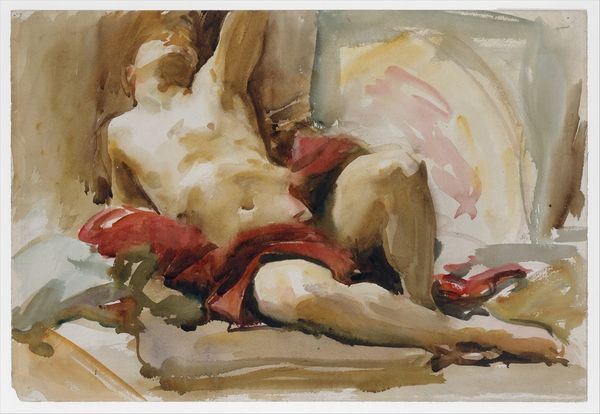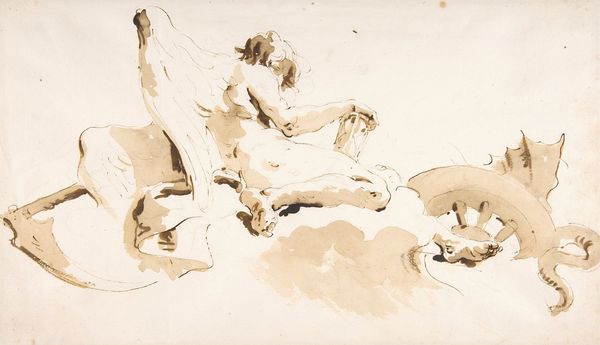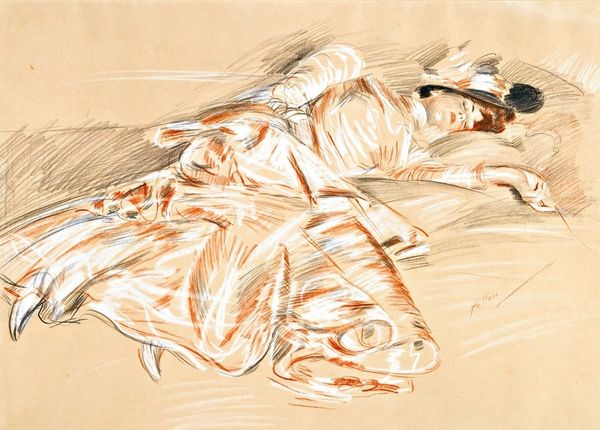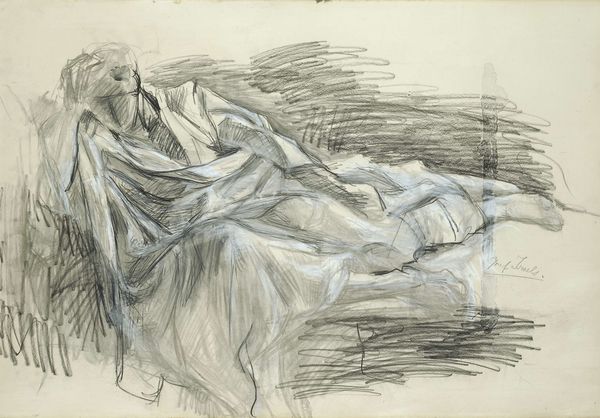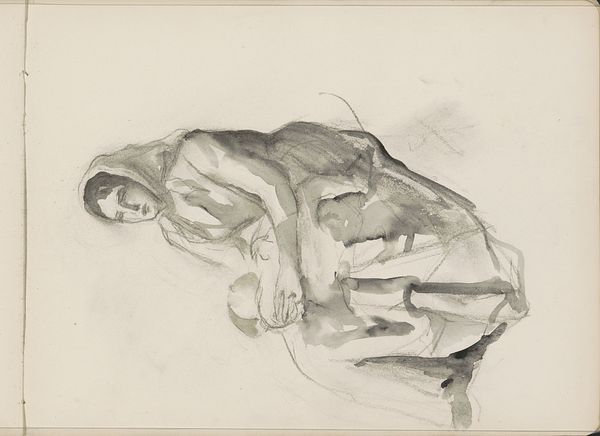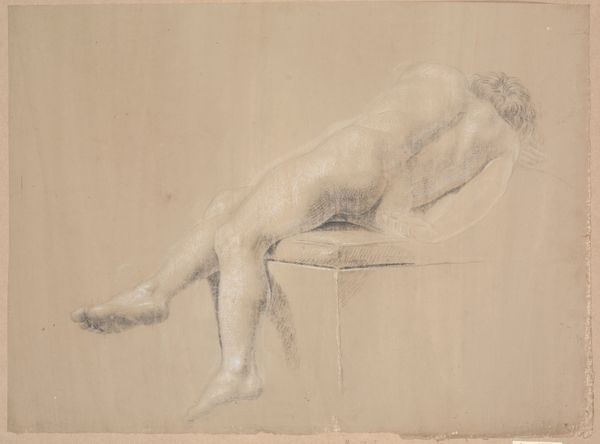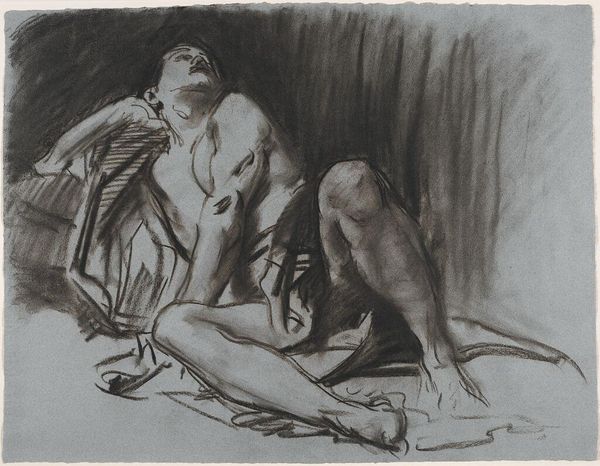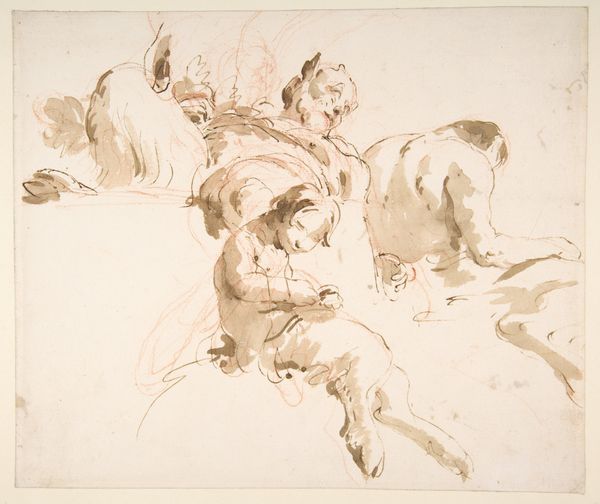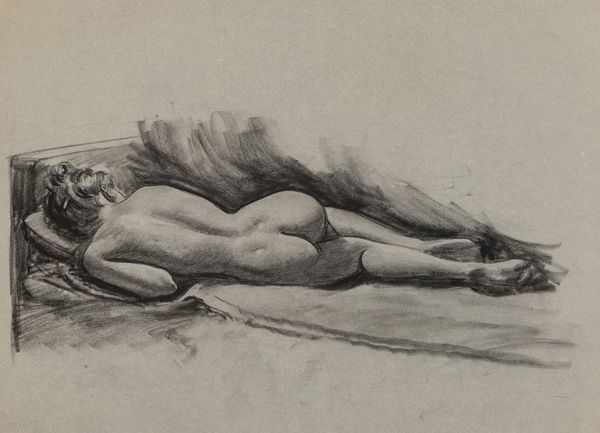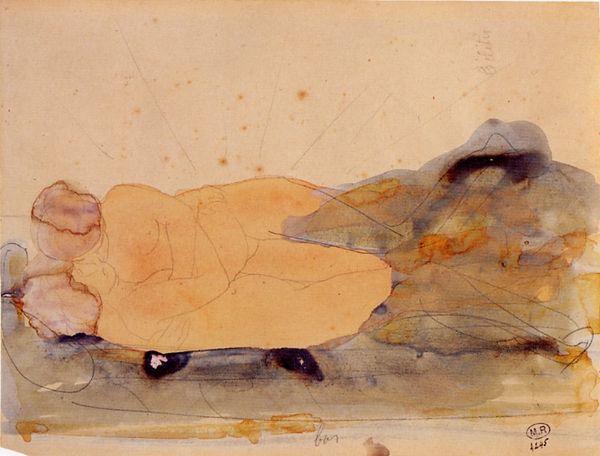
drawing, watercolor
#
portrait
#
drawing
#
figurative
#
charcoal drawing
#
figuration
#
oil painting
#
watercolor
#
line
#
nude
#
watercolor
Copyright: Public Domain: Artvee
Curator: "Reclining Lady," rendered with watercolor and charcoal, is a fascinating work attributed to Giovanni Boldini, though undated. What strikes you initially about it? Editor: The composition gives an impression of spontaneity; the woman seems caught mid-motion, lost in thought, rendered with warm shades giving intimate undertones. Curator: Precisely. Looking closer, the rapid lines and use of watercolor, along with areas of untouched paper, denote its possible function as a study. There's a clear focus on the materiality of rendering flesh in a fleeting gesture. How does that contribute, in your view, to its impact? Editor: Well, in considering the social context, one can view that portrayal within the gaze of a male artist, perhaps a glimpse into private or sensual spaces typically inaccessible. How does the apparent 'unfinished' nature complicate its potential as a finished product versus an exploratory study? Curator: The sketch-like quality could be interpreted as the artist deliberately revealing the means of production; exposing the bones of a representation through the active charcoal. It highlights the choices made in representing form with certain economy. Editor: Exactly. Consider that the labor required to produce finished salon portraits also involved many invisible bodies. Could this more immediate format have challenged those norms by revealing some aspects of the means and making of that period's social construction of femininity, even if unwittingly? Curator: An astute point; considering class and consumption, Boldini created commercial pieces largely for elite clientele. This one presents the idea of process versus the glossy presentation of a constructed woman within bourgeois life, which is key to his legacy. It seems more immediate. Editor: Yes, I feel it makes an intriguing statement about femininity and power relations, not just in art historical, but in societal narratives. Curator: Indeed, seeing beyond its medium opens broader reflections regarding representation, social visibility and the role of process within production. Editor: Absolutely, viewing these subtle marks gives me much to reflect on when considering both production and its subject.
Comments
No comments
Be the first to comment and join the conversation on the ultimate creative platform.
